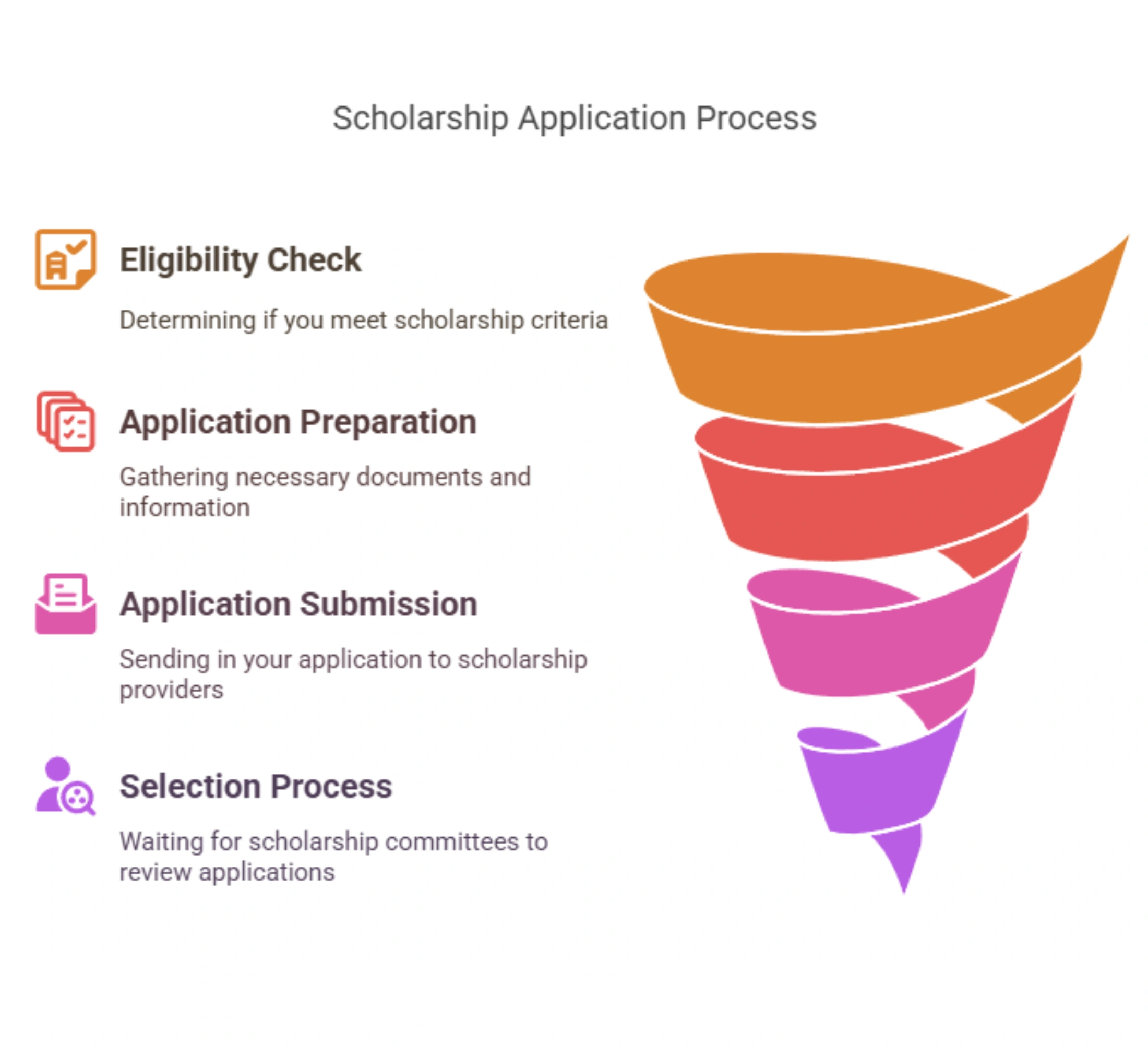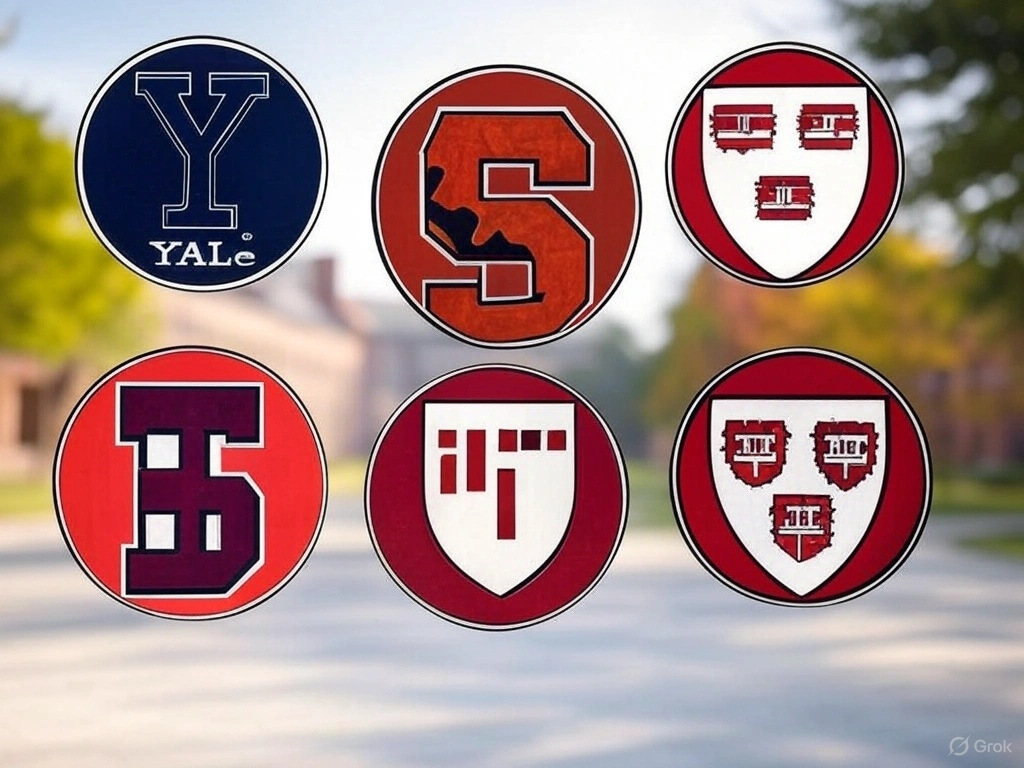Getting into a college in the USA takes more than just good grades. From test scores to recommendation letters, each school has its checklist. Whether you’re a U.S. student or applying from abroad, understanding the full list of admission requirements can save time, reduce stress, and improve your chances of getting accepted. Let’s make your Complete List of College Admission Requirements in the USA!
If you’re considering applying to colleges in the United States, you may want to consider your high school requirements. The admissions process can be confusing, with each school having its own set of criteria and requirements. But don’t worry—I’ve done it. I give you a complete list of what you need to attend college in the USA. This isn’t just a list—it’s written like a friend explaining it all to you, step-by-step, so you can feel confident about your application. And the best sources, like College Board, U.S. News, and Princeton Review, to ensure you’ve got everything you need.
Why College Admission Requirements Matter
Before we dive into all the details, let’s chat about why this stuff even matters. Applying to college isn’t like signing up for a gym pass—there’s no just strolling in with a smile and a debit card. Colleges want the full scoop on you: who you are, what you’ve done, and how you’ll mesh with their vibe. These admission requirements? They’re like a sieve, helping them sort through a mountain of applicants to find the ones who fit. And let me tell you, with over 4,000 colleges across the U.S., the way they do things can differ big time from one place to another.
The Core College Admission Requirements
Every college in the USA has a unique process, but there are some universal requirements you’ll see across the board. These are the essentials that form the backbone of your application. Here’s the complete list, with details on what each one means and why it’s important.
1. High School Diploma or Equivalent
What it is: You need to prove you’ve completed high school (or its equivalent, like a GED).
Why it matters: Colleges want to know you’ve got the basic education to handle their coursework.
Details: Most U.S. colleges expect you to have graduated from high school with a diploma. If you’re still in school when you apply, they’ll want to see your transcript so far and might ask for your final diploma later. According to BigFuture by the College Board, some schools also accept a General Education Diploma (GED) or homeschool credentials, but you’ll need to check with each college’s admissions office. For example, Ivy League schools might scrutinize homeschool records more closely to ensure rigor.
What you need:
- An official high school transcript (more on this below).
- A diploma (or proof of graduation) is sent after you finish school.
For international students or homeschoolers, extra documentation like course descriptions or equivalency certificates might be required.
2. High School Transcript
What it is: A record of all your high school courses and grades.
Why it matters: This shows colleges your academic performance over time—not just your final GPA, but how you’ve handled specific subjects.
Details: Your transcript is like your academic résumé. It lists every class you’ve taken, your grades, and often your GPA. U.S. News (another top-ranking site) points out that colleges pay close attention to your performance in core subjects like math, science, English, and history. They also look at whether you took challenging courses like Advanced Placement (AP) or International Baccalaureate (IB). Selective schools might expect a GPA of 3.5 or higher, while community colleges often have more flexible standards.
What you need:
- Request an official transcript from your school counselor.
- Make sure it’s sealed and sent directly to the colleges (many now accept electronic versions).
For international students, you might need a translated and certified version if it’s not in English.
3. Standardized Test Scores (SAT or ACT)
What it is: Scores from the SAT or ACT, which measure your readiness for college-level work.
Why it matters: These tests give colleges a standardized way to compare applicants from different schools.
Details: This one’s tricky because the landscape has shifted. According to Princeton Review, many colleges went test-optional during the COVID-19 pandemic, and over 1,800 schools are still test-optional for 2025 admissions. However, some big names like MIT, Dartmouth, and Yale have brought back testing requirements for Fall 2025. The SAT is reading, writing, and math, while the ACT adds a science section. Scores range from 400-1600 for the SAT and 1-36 for the ACT. Competitive schools often want scores in the top percentiles (e.g., 1400+ SAT or 32+ ACT), but community colleges rarely require them.
What you need:
- Register for the SAT or ACT (check deadlines on their websites).
- Send official scores via College Board (SAT) or ACT directly to your colleges.
If test-optional, decide if your scores strengthen your application—talk to your counselor!
4. Application Form
What it is: The official document where you tell the college you want to apply.
Why it matters: It’s your formal “I’m in!” declaration, plus it collects basic info about you.
Details: Most schools use platforms like the Common App (accepted by over 900 colleges), Coalition App, or their online forms. College Board’s BigFuture says you’ll need to fill in personal details (name, address, etc.), your academic history, and extracurricular activities. Deadlines vary—Early Decision/Action is often November 1, while Regular Decision is January 1-15 for Fall 2025—but always check each school’s website.
What you need:
- Create an account on the Common App or the college’s portal.
- Double-check deadlines (e.g., UCLA’s is November 30 for UCs).
- Pay the application fee (usually $50-$90) or request a fee waiver if eligible.
5. Personal Essay or Statement
What it is: A 500-650-word essay about yourself, often based on prompts.
Why it matters: It’s your chance to show your personality and stand out beyond grades.
Details: The Common App offers seven prompts each year (e.g., “Describe a challenge you’ve overcome”), and many schools require additional “Why us?” essays. U.S. News emphasizes that a strong essay can tip the scales for selective colleges like Harvard or Stanford. It’s not just about perfect grammar—it’s about telling a story that’s uniquely you. For example, writing about how you started a coding club could show initiative and passion.
What you need:
- Brainstorm a topic that reflects your values or growth.
- Draft, revise, and get feedback from a teacher or mentor.
- Submit it via the application portal by the deadline.
6. Letters of Recommendation
What it is: Letters from teachers or counselors vouching for your abilities.
Why it matters: They give colleges an outside perspective on your character and work ethic.
Details: Most selective colleges ask for 1-3 letters, usually from core subject teachers (math, English, etc.) who know you well. Princeton Review suggests picking someone who can speak to your strengths—like how you aced their class or led a group project. Community colleges often skip this, but Ivy Leagues might even want a counselor letter too.
What you need:
- Ask recommenders at least a month before the deadline.
- Provide them with a résumé or list of achievements to help them write.
- Submit via the application platform (e.g., Common App assigns them).
7. Application Fee
What it is: A fee to process your application, typically $50-$90 per school.
Why it matters: It’s how colleges fund their admissions offices.
Details: Fees add up fast if you’re applying to multiple schools—10 apps at $70 each is $700! BigFuture notes that low-income students can request fee waivers through the Common App or NACAC, often with proof like free lunch eligibility.
What you need:
- Pay online when you submit your app.
- Apply for a waiver if you qualify (talk to your counselor).
Additional Requirements for Specific Applicants
The core list above applies to most U.S. high school students, but depending on who you are, you might need more. Here’s what else could come up.
8. English Proficiency Tests (International Students)
What it is: Tests like TOEFL or IELTS prove you can handle college-level English.
Why it matters: Colleges need to know you won’t struggle with lectures or assignments.
Details: If English isn’t your first language, schools like NYU or UC Berkeley often require a TOEFL score of 100+ (out of 120) or IELTS 7.0+. EducationUSA (a U.S. State Department site ranking high) says some schools accept Duolingo English Test scores too (e.g., 120+).
What you need:
- Take the test and send official scores.
- Check each school’s minimum score requirement.
9. Portfolio or Audition (Arts Programs)
What it is: A collection of your work or a live performance for programs like art, music, or theater.
Why it matters: It shows your talent and readiness for specialized study.
Details: Schools like Juilliard or RISD want to see your best stuff—think drawings, recordings, or a dance reel. Deadlines might differ from the main app, so plan.
What you need:
- Prepare 10-20 pieces (follow the school’s guidelines).
- Submit digitally or schedule an audition.
10. Financial Documents (International Students)
What it is: Proof you can pay tuition and living costs, like bank statements.
Why it matters: U.S. visas require evidence of funding.
Details: EducationUSA explains you’ll need this for the I-20 form (for an F-1 visa). Expect to show $30,000-$70,000, depending on the school.
What you need:
- Bank statements or a sponsor’s affidavit.
- Submit after acceptance, but prep early.
11. AP/IB Scores or College Credits (Advanced Students)
What it is: Scores from AP exams, IB diplomas, or dual-enrollment courses.
Why it matters: They can earn you college credit or boost your app.
Details: A 4 or 5 on an AP exam might skip you out of intro classes. College Board says to send these scores separately if they help your case.
What you need:
- Order official score reports from the College Board or IB.
- Include them if they’re strong (e.g., 4+ on AP).

Tips to Meet These Requirements Like a Pro
Now that you’ve got the list, here’s how to tackle it without losing your mind.
- Start Early: Junior year is prime time to take the SAT/ACT, ask for letters, and draft essays. Waiting until senior fall is a recipe for stress.
- Research Each School: A safety school like your local state college might just need a transcript and app, while Stanford wants everything plus your soul (kidding—sort of).
- Organize with a Spreadsheet: Track deadlines, fees, and required docs for each college.
- Polish Your Story: Your essay and activities should tie together—show how your robotics club sparked your engineering dreams.
- Ask for Help: Counselors, teachers, and even online forums can guide you if you’re stuck.
What Happens After You Submit?
Once you’ve sent everything, the waiting game begins. Colleges review your app holistically (grades + scores + essays + more) and send decisions—early ones by December, and regular ones by April. If accepted, you’ll need to:
- Submit a deposit (usually $200-$500) by May 1.
- Send final transcripts.
- Apply for housing or financial aid if needed.
For international students, it’s visa time—use that I-20 and financial proof to get an F-1 visa.
Conclusion
Complete List of College Admission Requirements in the USA, Applying to college in the USA is a marathon, not a sprint. With this complete list of admission requirements—high school diploma, transcript, test scores, essays, letters, fees, and extras for special cases—you’re armed with everything you need to succeed. Whether you’re aiming for a community college or chasing a dream school like Yale, the key is preparation and attention to detail.
FAQ
What is required for college admission in the USA?
To get into a U.S. college, you’ll need a high school diploma, transcript, and often SAT/ACT scores. Add a completed application, essay, recommendation letters, and a fee—usually $50-$90. Some schools ask for extras like portfolios or English tests for international students.
What are the requirements for universities in the USA?
Complete List of College Admission Requirements in the USA, U.S. universities typically want a diploma, official transcript, and test scores (SAT/ACT), though many are test-optional now. You’ll submit an application, a personal essay, 1-3 recommendation letters, and a fee. Extras like AP scores or financial proof might apply, especially for competitive or international applicants.
What are the basic requirements for college?
Complete List of College Admission Requirements in the USA, The basics are simple: a high school diploma or GED, your transcript showing grades, and a filled-out application. Most colleges also want an essay, a fee, and sometimes test scores or letters. It’s the foundation—specifics vary by school, so always double-check their website.
What are the 5 C’s in college?
The “5 C’s” aren’t a standard term, but think character, competence, commitment, curiosity, and community. Colleges value your personality, skills, dedication, eagerness to learn, and how you’ll fit in. Show these through essays, grades, activities, and letters—schools want well-rounded students who’ll thrive.
What are examples of admission requirements?
Complete List of College Admission Requirements in the USA, Examples include a high school transcript with a 3.0 GPA, an SAT score of 1200+, or an ACT of 25. You might need two teacher recommendation letters, a 500-word essay, and a $70 fee. For art schools, a portfolio; for internationals, a TOEFL score of 100+. It depends!











